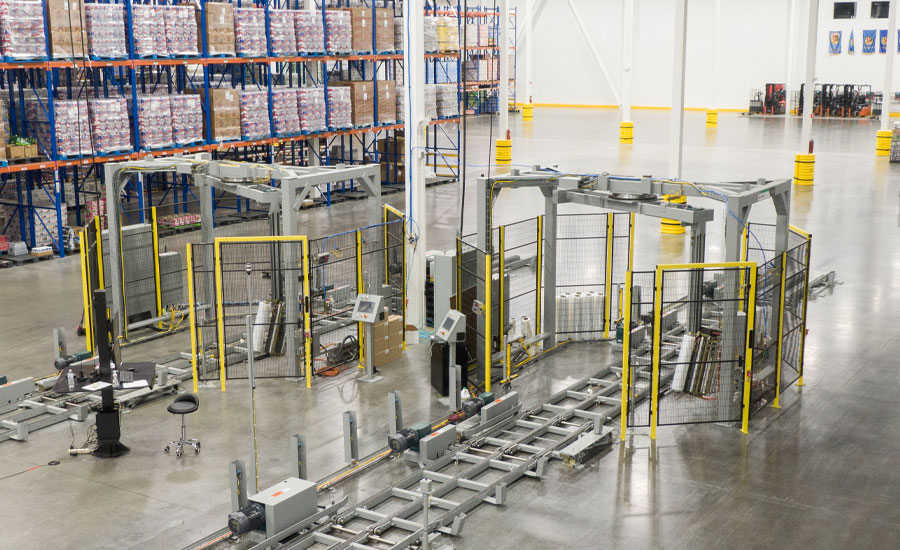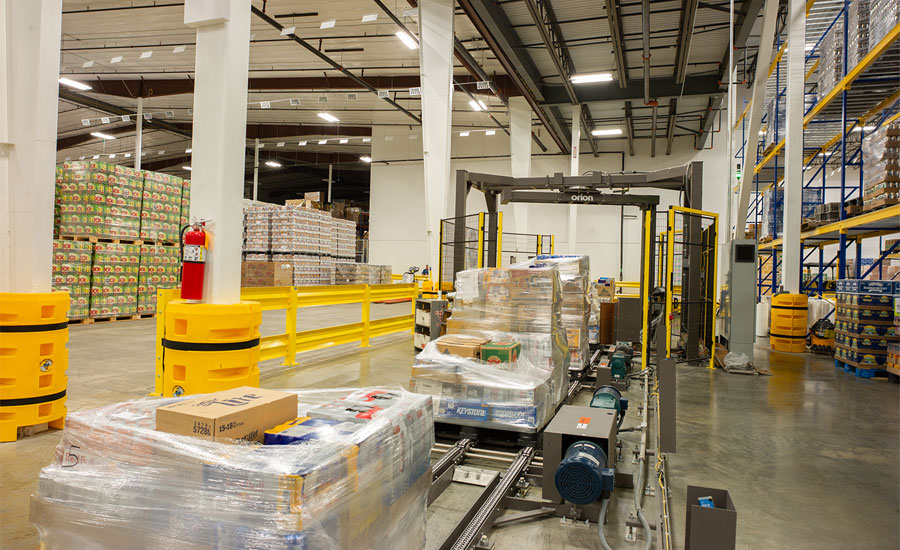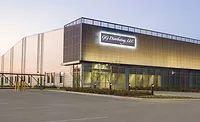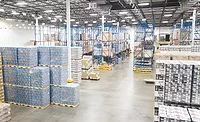Operations
Automation, SKU proliferation influence future beverage facility builds
Operations turn to sustainable-focused options for new facility builds

Image courtesy of HDA Architects
In the 1989 film “Field Of Dreams,” Ray Kinsella (Kevin Costner), troubled by his broken relationship with his late father, a devoted baseball fan, exhibits fears of growing old without achieving anything. One night, while walking through a cornfield on his farm in Dyersville, Iowa, Ray hears a voice whispering: “If you build it, he will come.” He then sees a vision of a baseball diamond in the cornfield and “Shoeless” Joe Jackson standing in the middle. Despite taunts of lunacy, Ray builds a baseball diamond on his land, supported by his wife, Annie (Amy Madigan).
In the real world of beverage operations, where planning to build a new facility is not based on lunacy or whispers of spirits from the past, experts note that a variety of factors come into play, influencing new facility builds.
Jack Holleran, president of HDA Architects, St. Louis, points out that SKU proliferation and adding automated storage and retrieval systems (ASRS) continue to be two driving forces behind new beverage facility builds.
“Increased product storage space and optimization of the pick process and loading are key components needed to appropriately accommodate SKU growth,” he explains. “Similarly, ASRS equipment requires a much greater clear height than many older, existing facilities possess. There is often little to no room to expand on existing sites, and renovation would prove costly while still not allowing for all the necessary SKU and ASRS updates.
“Acquisition of other distributors and subsequent consolidation into a single distribution center is another major influencer prompting new facility builds,” Holleran continues. “If sufficient land is not available adjacent to recently purchased buildings or if several smaller, inefficient facilities can be combined into one first-class location, building new is far better than sinking a significant investment into a short-term and ineffective solution.”
Michael Roe, senior account executive at Fairfield N.J.-based DMW&H, notes that in cases where facility expansion is feasible, beverage operations can maximize efficiency over building a completely new building.
“Our clients look at a variety of factors when considering new facility builds or expansions,” Roe says. “Higher volumes due to consolidation, facility age and space constraints are just a few of the leading influences we evaluate during our business analysis.”
Among top items requested for new facility builds, Roe notes that beverage operations often desire flexibility, maximum storage and automation to optimize efficiency.
“As a turn-key material handling solutions provider, we are able to provide these asks in a number of ways,” he says. “Automation is a popular avenue to explore as it can deliver these results along with a significant, long-term return on investment.”
Josh Goodman, AIA, project director at HDA Architects, echoes similar sentiments, noting that beverage operations frequently request larger product staging and flexible office space.
“Working with a wide variety of beverage clients across the U.S., HDA consistently designs new facilities with several components that are in high demand,” he says. “Greater clear height for ASRS equipment and for storage that is four pallets high, a structural grid that permits racking with 12-foot-wide aisles, and condensed POS with racking are essential for many of our clients’ warehouse operations. A larger product staging area and flexible office space for sales are also needed to give wholesalers the ability to adapt to changing sales requirements.
“Flexibility for future expansion is a critical request for new facilities, and HDA strongly encourages clients to incorporate this in both design and site layout with any new build,” Goodman continues. “When we work with beverage wholesalers to plan a new facility, strategic design choices are at the forefront. New builds should enable the owner to seamlessly occupy the facility well into the future.”

Image courtesy of HDA Architects
Building for today and tomorrow
As using long-range forecasting and projections can help beverage operations identify opportunities and make plans to meet goals, experts highlight some considerations to take into account when planning to build a new facility.
“Forecasting SKU growth and fleet requirements, including docks and types of vehicles, should be carefully considered when planning a new facility,” HDA’s Holleran says. “With distributors averaging 50-100 new SKUs per year, that accounts for 15,000 to 30,000 additional square feet required over a decade. At HDA, we’re conscious of those needs and work closely with the owner and project consultants to accurately account for future space needs.”
DMW&H’s Roe notes that, as growth and volume projections change regularly, it is important to ensure that an operation can adapt based on demand.
“Our clients are requesting designs that are flexible, scalable and adjust with their business,” Roe says. “Rather than building out an entire solution right away, we frequently build out slowly as demand increases while keeping the operation fully functional.
Moreover, as the material handling industry has seen an influx of new, automated technologies, Roe notes that beverage operations should consider how the rise in automation impacts warehouse builds.
“For example, in beverage, it is imperative to load trucks in reverse stop order. Historically, this is a very time consuming and labor-intensive process,” Roe says. “However, with the technology available today, we’re able to load sequenced product in reverse stop order with minimal labor in a fraction of the time.”
HDA’s Goodman reiterates how the rise of automation has significantly affected new warehouse builds.
“In particular, the need for greater clear height to accommodate ASRS equipment is tremendous,” he says. “However, this also means less floor area is needed because of the emphasis on expanding vertical space.
“The design of new warehouse builds should carefully balance the vertical needs of ASRS with items that require substantial horizontal space and have become increasingly popular, like automated shrink wrapping,” Goodman continues. “While it does boost speed and efficiency, automated shrink wrapping can be a cumbersome element to the warehouse layout.”

Image courtesy of HDA Architects
Designs for a bright future
As more and more companies look to reduce their environmental impact, experts note that beverage operations are turning to sustainable-focused options when planning to build a new facility.
“Much of HDA’s work incorporates sustainable practices as a standard element to any project, whether LEED certification is being pursued or not,” HDA’s Goodman says. “Owners are increasingly looking for ways to help the environment and responsibly build while also saving costs and operating expenses.
“Solar panels are a huge focus, particularly with the large roof space of most warehouses,” he continues. “Intentional thermal mass design that is energy efficient and insulated concrete tilt panels are a must. We’re even working with a client right now on an inventive HVAC/ice storage design that will save operating costs and secure sizable rebates. This method continues to gain traction as a viable sustainability option and has been included in the design of other HDA beverage wholesaler projects as well.”
As far as using an architectural-led team goes, HDA’s Holleran notes that entrusting a specialized, architect-led design build team with a project offers numerous benefits, including:
- Earlier and more accurate budgeting and scheduling
- Shortened design and construction time
- Collaborative and team-based relationship between designers and contractors
- Continuity throughout the entire project that preserves the owner’s design intent
- Exceptional quality control with the architect monitoring construction while representing the owner’s interest as their trusted advocate
- Direct and streamlined communication through a single point of contact
- Complete integration of design, construction and technical infrastructure
Working with an architect that specializes in beverage wholesale facilities like HDA also can improve operational enhancements in the design resulting in amplified productivity and reduction of costs, Holleran says.
“Ultimately, using an architect-led design build team limits the time and effort required by the owner while reducing their risk and exposure, allowing them to focus on their core business,” he concludes.
Looking for a reprint of this article?
From high-res PDFs to custom plaques, order your copy today!







